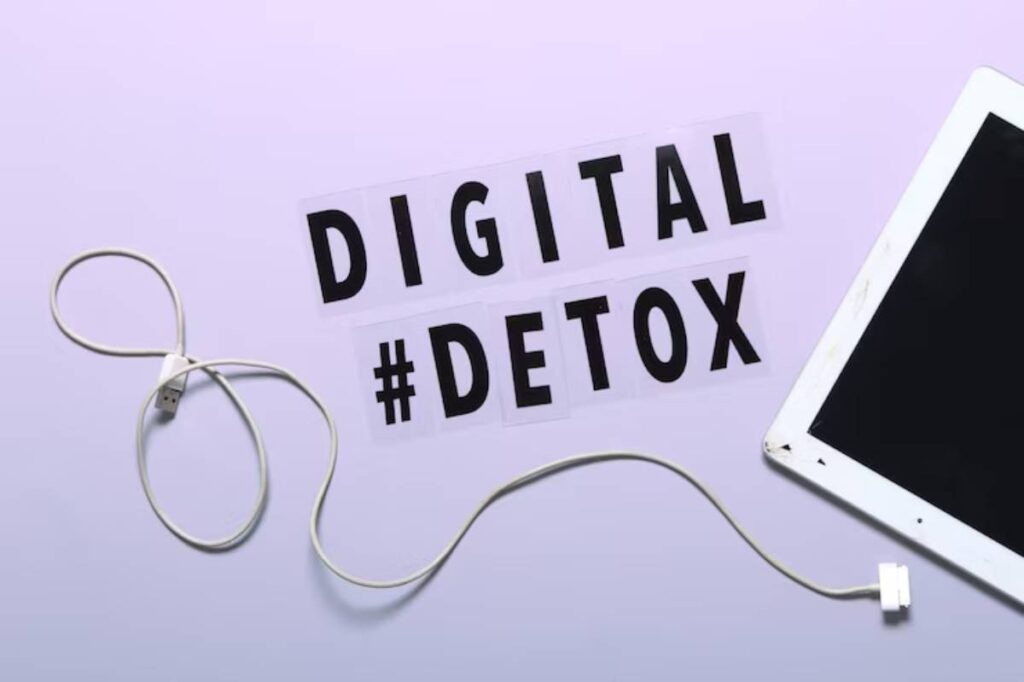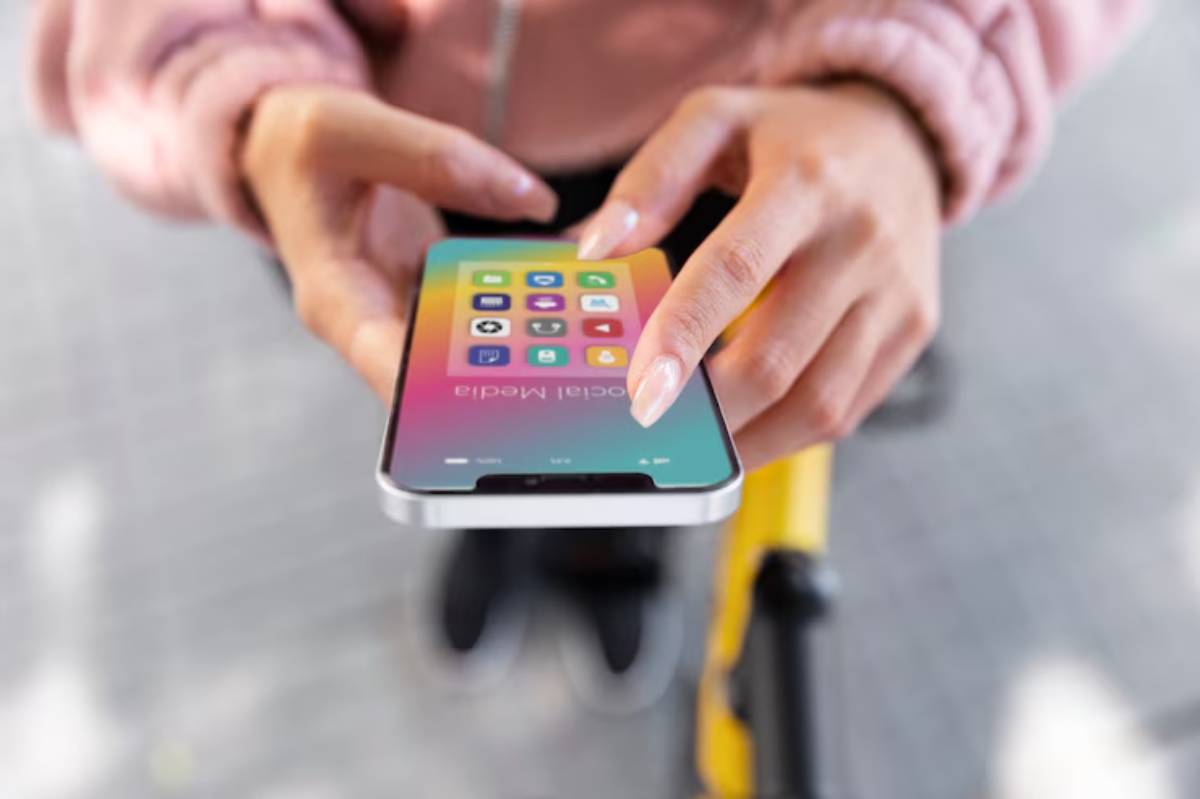The Personal Development Blog

Digital Minimalism vs. Digital Detox: Key Differences
You’ve probably heard people say, “I need a digital detox,” usually after a hectic week of emails, pings, and relentless screen time. It sounds refreshing — like a mental reset button. But what happens after that detox ends? Do your digital habits change for good, or do you fall straight back into the same patterns?
This is where digital minimalism comes into play — not as a temporary break, but as a long-term mindset.
While both digital detoxes and digital minimalism aim to support tech wellness and reduce overwhelm, they’re far from the same. Think of a digital detox like a holiday. Digital minimalism is about changing how you live each day.
In this guide, we’ll look at the main differences between digital detox and minimalism. We’ll explore their benefits and help you decide which is best for you. You’ll also see how both can promote more mindful tech use.
Understanding the Basics
Let’s begin by defining each approach clearly so the differences become easier to spot.
What Is a Digital Detox?
A digital detox is a short-term break from screens or certain technologies. Try turning off your smartphone for the weekend. You could also delete social media apps for a week. Or, go completely offline during your holiday.
The goal is often to:
- Reduce stress or anxiety
- Improve sleep
- Reconnect with real-world experiences
Detoxes can last a few hours, days, or even weeks. They act like a reset button. They help you notice how technology impacts your mind, mood, and focus.
However, digital detoxes are temporary. Old patterns often come back after they’re over—unless there’s a clear, intentional strategy in place.
What Is Digital Minimalism?
Digital minimalism, on the other hand, is a lifestyle philosophy. Regularly check your tech use. Remove anything that doesn’t support your values or well-being.
Instead of simply cutting back, digital minimalists:

- Use fewer apps or platforms by choice
- Set clear boundaries for device use
- Choose quality over quantity in digital consumption
- Focus on tech that adds meaningful value
It’s about intentional, conscious technology use — not complete abstinence. Digital minimalism encourages ongoing habits that foster calm, focus, and clarity over time.
For a deeper introduction to the core mindset, have a look at what is digital minimalism and why it matters.
Core Differences: Digital Detox vs. Minimalism
Now that we’ve defined both, let’s break down how they actually differ in approach and outcome.
1. Duration
- Digital Detox: Temporary; usually lasts a set period (e.g. 3 days, 1 week).
- Digital Minimalism: Ongoing; it’s a long-term lifestyle shift.
A detox is like putting your phone in a drawer for a weekend. Minimalism is rethinking whether you even need certain apps going forward.
2. Purpose
- Detox: To recover, reset, or take a break from overload.
- Minimalism: To redesign your relationship with technology altogether.
Detox helps you step back. Minimalism helps you step forward with intention.
3. Sustainability
- Detox: Often leads back to old habits once it ends.
- Minimalism: Builds lasting habits that align with personal goals and values.
Many people leave detox programs feeling hopeful. But soon, they slip back into their old screen habits. Digital minimalism tackles the root problem, so it cuts down the need for detoxes. It focuses on solutions, not just treating symptoms.
4. Tools vs. Habits
- Detox: Involves turning off or deleting tech tools temporarily.
- Minimalism: Involves curating how and why those tools are used.
A digital minimalist can use Instagram. They set strict time limits, silence notifications, and curate their feed to match their creative interests.
Where They Overlap
Despite their differences, detoxes and minimalism share some common ground:
- Both support tech wellness by creating mental space and reducing overstimulation.
- Both encourage self-awareness, helping you observe how technology affects your mood, focus, and behaviour.
- Both offer a path to better balance, especially when used together.
Many people start with a detox to break unhealthy habits. Then, they switch to minimalism to keep those benefits. One helps you pause, the other helps you evolve.
Real-Life Story: Hannah’s Detox to Minimalism Shift
Hannah, a 30-year-old architect, found herself checking her phone over 100 times a day. She constantly felt scattered, slept poorly, and struggled to focus.
She took a week-long digital detox during a countryside retreat, leaving her phone behind. “At first, it was uncomfortable,” she says. “But by day three, I felt calm and clear-headed.”
After the detox, Hannah decided not to reinstall certain apps.
- Kept her phone on Do Not Disturb during work hours
- Replaced doom-scrolling with mindful journaling
- Set screen limits for entertainment apps
Within two months, her screen time dropped by 40%, and her focus improved dramatically.
Her experience shows how a detox can spark awareness, but minimalism turns that awareness into sustainable change.
Choosing What Works for You
So, should you detox or go minimalist?
When a Digital Detox Might Be Best
- You feel emotionally overwhelmed by screen time
- You’re craving immediate mental space
- You need a quick reset or break
- You’re going on holiday and want to unplug
Detoxing is great for disrupting compulsive habits, especially when paired with a clear timeframe and support plan for after.
When Digital Minimalism Might Be Better
- You want lasting change, not just relief
- You’re seeking more focus and intentionality in daily life
- You’re ready to rethink your digital environment
- You want to reduce long-term screen fatigue or burnout
Minimalism is ideal for reclaiming control and designing a digital life that supports your priorities. It’s not about being anti-tech — it’s about being pro-purpose.
If you’re ready to take the next step, understanding the core principles of digital minimalism will help build a strong foundation.
Digital Detox and Minimalism in Daily Life
Here’s how both can show up in practical ways:
A Digital Detox Might Look Like:
- Going screen-free one day a week
- Deleting social media for a month
- Taking a tech-free holiday
- Leaving your phone out of the bedroom
Digital Minimalism Might Look Like:

- Keeping your phone in a separate room during deep work
- Turning off all non-essential notifications
- Using apps only during scheduled blocks
- Deleting low-value or impulse-use apps permanently
You don’t need to choose one over the other — many people benefit from using both approaches at different times, depending on life context and mental load.
Common Myths and Misunderstandings
“Digital minimalism is too extreme”
Not true. You can tailor it to your lifestyle. It’s not about getting rid of all screens — it’s about being selective. A minimalist can use YouTube. They choose subscriptions that match their interests. They avoid autoplay and limit their viewing time.
“Detoxing is pointless if you’ll just go back to old habits”
Not if you treat a detox as a learning experience. Use the break to reflect on how different you feel without constant input, then use that clarity to inform your long-term habits.
“You have to be super disciplined”
You really don’t. Both digital detoxes and minimalism can start small. You could log off by 8 PM or use your phone on purpose instead of just automatically.
The goal isn’t perfection — it’s progress.
Final Thoughts: Less Noise, More Intention
In a world where screens are always on and focus is hard to find, digital detox and digital minimalism provide a rare gift: clarity.
The difference lies in approach.
- Detoxes give you space to breathe.
- Minimalism helps you rebuild with purpose.
Take a short break to clear your mind. Then, slowly build a digital life that supports you, not hinders you. Over time, you’ll likely notice improved focus, deeper rest, better emotional balance, and a stronger sense of control.
So what’s your next step? Try a one-day detox. Review the apps you use most. Or simply set a rule: no screens in bed tonight.
One small shift is all it takes to start feeling different — and thinking clearly again.









